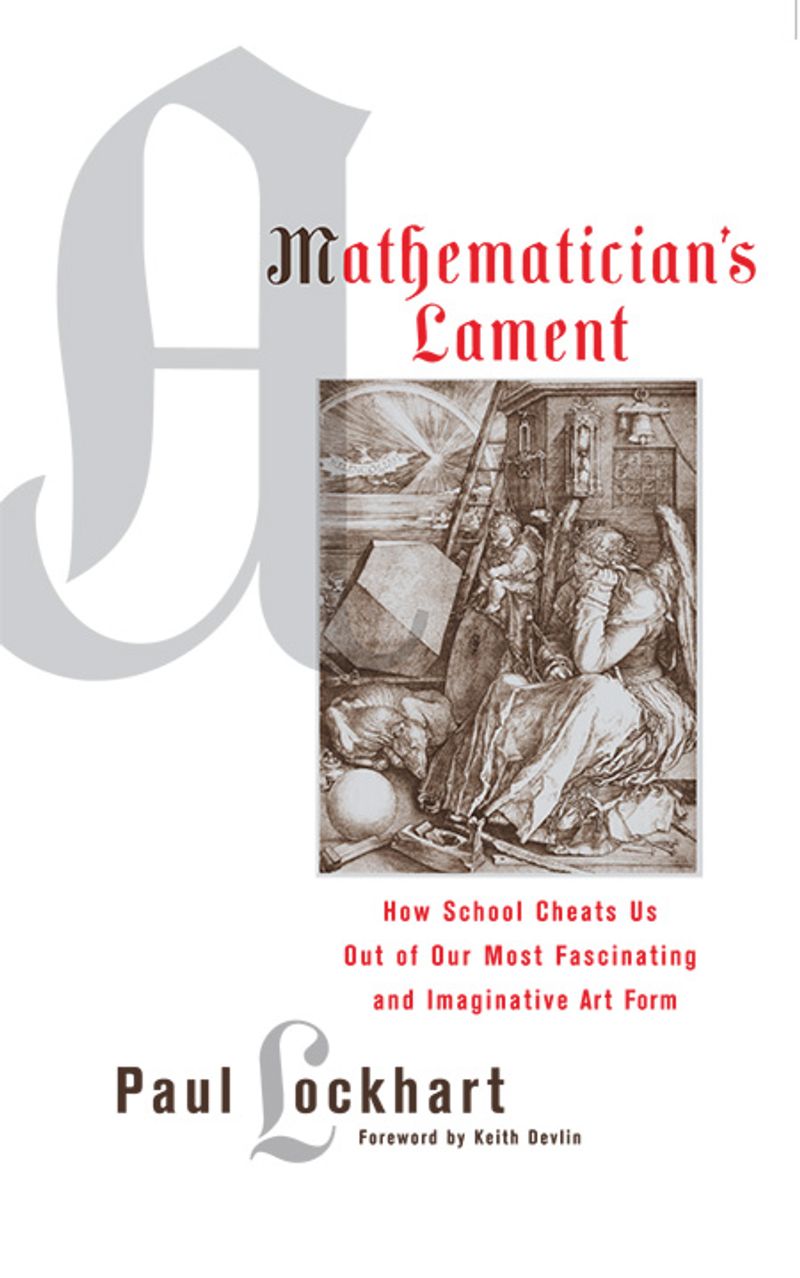One of the best critiques of current K-12 mathematics education I have ever seen, written by a first-class research mathematician who elected to devote his teaching career to K-12 education.
— Keith Devlin, NPR’s “Math Guy”
A Mathematician’s Lament
How School Cheats Us Out of Our Most Fascinating and Imaginative Art Form
A brilliant research mathematician reveals math to be a creative art form on par with painting, poetry, and sculpture, and rejects the standard anxiety-producing teaching methods used in most schools today. Witty and accessible, Paul Lockhart’s controversial approach will provoke spirited debate among educators and parents alike, altering the way we think about math forever.

Ebook
- ISBN
- 9781934137338
Paperback
- ISBN
- 9781934137178
Paul Lockhart dropped out of college after one semester to devote himself exclusively to math. Based on his own research he was admitted to Columbia University where he received his PhD. The author of Arithmetic, Measurement, and A Mathematician’s Lament, he has taught mathematics at Brown University, University of California, Santa Cruz, and to K-12 level students at St. Ann’s School in Brooklyn, New York.
visit author page »Praise for A Mathematician’s Lament
Gorgeous. . . . Lockhart is passionate, contagiously so.
— Los Angeles Times
Searing and pointed. . . . An easy, thoughtful, and entertaining read. . . . [Lockhart’s] passion makes the critique compelling.
— Notices of the American Mathematical Society
A Mathematician’s Lament is a fascinating argument that anyone interested in mathematics education should read. I promise that they will enjoy the experience, whether they agree with all that Lockhart writes or not.
— Bryan Bunch, author of The Kingdom of Infinite Number: A Field Guide
This brief and elegant celebration of mathematics is a charming rant against the way you and I learned the subject. Is painting just coloring in numbered regions? Is the sunset just a list of wavelengths and a compass setting? No more, Lockhart argues, than mathematics is just definitions and formulas. To put back play and joy in our mathematics classrooms, he shows, all we need do is restore the real mathematics.
— Robert P. Crease, author of The Great Equations: Breakthroughs in Science from Pythagoras to Heisenberg
Lockhart has written an important, and eloquent, lamentation and exultation: he laments about the state of math education today, but exults in the hope that teachers might be inspired to invite students to experience mathematics as the exciting ‘poetry of ideas’ that it truly is.
— Barry Mazur, Gerhard Gade University Professor, Harvard University and author of Imagining Numbers (particularly the square root of minus fifteen)

